
|
Now it is very bright as 10.5 mag (June 29, Carlos Labordena). It will be fading after this. It is not observable in the Southern Hemisphere. It is observable only until early July even in the Northern Hemisphere.
Date(TT) R.A. (2000) Decl. Delta r Elong. m1 Best Time(A, h)
July 6 8 14.26 42 36.8 2.209 1.362 25 11.2 18:31 (132,-15)
July 13 8 35.46 38 27.8 2.287 1.398 22 11.7 18:34 (127,-14)
|
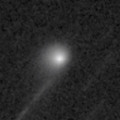
|
Now it is 13.2 mag (June 30, Thomas Lehmann). It will brighten up to 10.5 mag and it will be observable in good condition from autumn to winter.
Date(TT) R.A. (2000) Decl. Delta r Elong. m1 Best Time(A, h)
July 6 2 36.48 9 21.2 3.683 3.361 63 12.1 5:38 (220, 37)
July 13 2 39.21 10 53.0 3.557 3.337 69 12.0 5:37 (212, 38)
|
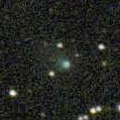
|
Now it is bright as 11.8 mag (July 4, Thomas Lehmann). It is expected to brighten up to 10 mag in autumn. In the Northern Hemisphere, it stays observable for a long time while the comet is brightening. In the Southern Hemisphere, it it not observable until mid September.
Date(TT) R.A. (2000) Decl. Delta r Elong. m1 Best Time(A, h)
July 6 4 28.95 60 35.9 2.238 1.694 45 12.6 5:38 (206,-17)
July 13 4 30.48 60 5.9 2.124 1.647 49 12.3 5:37 (204,-15)
|
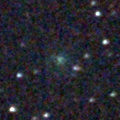
|
Now it is very bright as 11.2 mag (May 31, Chris Wyatt). It brightened very rapidly when it was not observable near by Sun. In the Southern Hemisphere, it stays observable in the evening sky for a long time after this while the comet will be fading. It is not observable at all in the Northern Hemisphere.
Date(TT) R.A. (2000) Decl. Delta r Elong. m1 Best Time(A, h)
July 6 8 19.86 -39 8.9 1.701 1.566 64 13.0 18:31 ( 61, 31)
July 13 8 59.95 -39 54.7 1.746 1.616 65 13.5 18:34 ( 61, 33)
|

|
Now it is not observable. It will appear in the morning sky again at 13-14 mag in August.
Date(TT) R.A. (2000) Decl. Delta r Elong. m1 Best Time(A, h)
July 6 5 51.02 20 6.3 3.115 2.155 15 13.1 5:38 (248, -4)
July 13 6 7.06 19 57.5 3.113 2.175 18 13.2 5:37 (247, -2)
|

|
It is expected to brighten up to 7 mag in 2020. Appearing in the morning sky.
Date(TT) R.A. (2000) Decl. Delta r Elong. m1 Best Time(A, h)
July 6 4 30.85 16 16.1 4.768 3.981 35 13.5 5:38 (239, 14)
July 13 4 37.23 16 60.0 4.636 3.915 40 13.4 5:37 (235, 16)
|

|
Now it is bright as 13.0 mag (May 23, Ken-ichi Kadota).
Date(TT) R.A. (2000) Decl. Delta r Elong. m1 Best Time(A, h)
July 6 0 56.99 14 32.7 5.774 5.770 84 13.5 5:38 (188, 40)
July 13 0 58.76 14 56.3 5.666 5.770 90 13.5 5:37 (180, 40)
|

|
It brightened up to 7.7 mag in June in 2018 (June 19, Juan Jose Gonzalez). Now it is fading. But it is still bright as 13.4 mag (May 30, Chris Wyatt). In the Southern Hemisphere, it stays observable for a long time until the comet will fade out. In the Northern Hemisphere, it is not observable for a long time until autumn when the comet fades out down to 16 mag.
Date(TT) R.A. (2000) Decl. Delta r Elong. m1 Best Time(A, h)
July 6 6 20.79 -29 12.6 4.707 4.171 52 13.8 5:38 (293, 18)
July 13 6 26.93 -28 52.9 4.764 4.228 52 13.9 5:37 (291, 22)
|
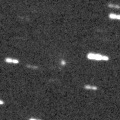
|
Now it is bright as 13.2 mag (June 30, Thomas Lehmann). It stays 13 mag for a long time in 2019. In the Southern Hemisphere, it is observable in excellent condition. In the Northern Hemisphere, it is not observasble until summer in 2020.
Date(TT) R.A. (2000) Decl. Delta r Elong. m1 Best Time(A, h)
July 6 7 50.10 -53 52.9 3.072 3.019 77 13.8 18:31 ( 43, 31)
July 13 7 56.65 -54 51.0 3.078 3.018 77 13.8 18:34 ( 41, 28)
|

|
It has not been observed yet in this apparition. Now it is fainter than 18.5 mag (June 9, Martin Masek). It is expected to brighten up to 12 mag from August to September. It is observable in good condition in the Northern Hemisphere. It will be low around the high light in the Southern Hemisphere.
Date(TT) R.A. (2000) Decl. Delta r Elong. m1 Best Time(A, h)
July 6 2 1.31 8 52.8 1.328 1.403 72 14.4 5:38 (210, 41)
July 13 2 20.82 12 43.3 1.285 1.385 72 13.9 5:37 (206, 38)
|

|
Now it is 13.1 mag (June 28, Thomas Lehmann). It stays 13-14 mag until summer. It is observable in excellent condition in the Southern Hemisphere. In the Northern Hemisphere, it will be unobservable soon.
Date(TT) R.A. (2000) Decl. Delta r Elong. m1 Best Time(A, h)
July 6 13 57.84 -42 49.4 3.061 3.623 115 14.0 19:02 ( 0, 82)
July 13 13 49.85 -42 38.8 3.196 3.652 108 14.1 18:34 ( 10, 82)
|

|
Now it is 16.9 mag (June 9, Martin Masek). It will brighten rapidly up to 11.5 mag in autumn. In the Northern Hemisphere, it will be observable in excellent condition. In the Southern Hemisphere, it will be extremely low from autumn to winter.
Date(TT) R.A. (2000) Decl. Delta r Elong. m1 Best Time(A, h)
July 6 0 25.62 -8 19.3 1.054 1.594 100 14.7 5:32 (180, 63)
July 13 0 40.76 -5 31.2 0.982 1.561 102 14.3 5:19 (180, 60)
|

|
Now it is 14.5 mag (July 3, Thomas Lehmann). It will brighten rapidly after this. It will be observable at 13.5 mag in good condition in autumn.
Date(TT) R.A. (2000) Decl. Delta r Elong. m1 Best Time(A, h)
July 6 17 21.20 -3 28.3 1.250 2.189 149 14.6 22:24 (180, 59)
July 13 17 17.40 -3 46.9 1.246 2.151 143 14.5 21:53 (180, 59)
|

|
Now it is 14.4 mag (June 10, Martin Masek). In the Southern Hemisphere, it is observable for a long time. It stays low in the Northern Hemisphere.
Date(TT) R.A. (2000) Decl. Delta r Elong. m1 Best Time(A, h)
July 6 0 29.96 -45 9.5 3.669 4.140 110 14.7 5:36 ( 0, 80)
July 13 0 28.62 -45 20.8 3.620 4.160 115 14.7 5:07 ( 0, 80)
|

|
It brightens up to 15 mag from July to September. In the Southern Hemisphere, it becomes observable after late July. It is not observable at all in the Northern Hemisphere.
Date(TT) R.A. (2000) Decl. Delta r Elong. m1 Best Time(A, h)
July 6 6 48.64 -1 29.9 2.320 1.456 24 15.3 5:38 (274, -3)
July 13 7 1.27 -5 2.3 2.260 1.439 27 15.1 5:37 (275, 2)
|

|
It approached to Earth down to 0.3 a.u. in mid February, and brightened up to 5.5 mag (Feb. 13, Juan Jose Gonzalez). Now it is fading. It will appear in the morning sky in July in the Northern Hemisphere, or in August in the Southern Hemisphere.
Date(TT) R.A. (2000) Decl. Delta r Elong. m1 Best Time(A, h)
July 6 4 45.30 37 1.7 3.248 2.445 31 15.4 5:38 (226, -3)
July 13 4 45.73 37 33.4 3.242 2.519 37 15.6 5:37 (222, 0)
|
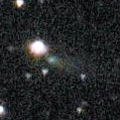
|
Now it is 15.5 mag (July 4, Thomas Lehmann). It stays at 15 mag for a while. It is observable in excellent condition in the Northern Hemisphere. It locates extremely low in the Southern Hemisphere.
Date(TT) R.A. (2000) Decl. Delta r Elong. m1 Best Time(A, h)
July 6 0 21.07 42 30.8 1.580 1.744 81 15.4 5:27 (180, 12)
July 13 0 33.73 43 52.0 1.579 1.786 83 15.5 5:12 (180, 11)
|
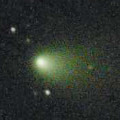
|
It brightened up to 12-13 mag from winter to spring. Now it is fading. It has already faded down to 15.1 mag (June 5, Thomas Lehmann). It will be getting lower after this. It will be unobservable in August in the Northern Hemisphere, or in September in the Southern Hemisphere.
Date(TT) R.A. (2000) Decl. Delta r Elong. m1 Best Time(A, h)
July 6 12 5.70 6 4.3 2.467 2.423 75 15.7 18:31 (151, 45)
July 13 12 14.83 4 21.7 2.569 2.448 71 15.9 18:34 (143, 44)
|
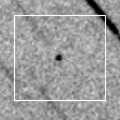
|
It passed the perihelion on July 2. Then it must have brightened up to 13 mag, but it was not observable around that time. In the Northern Hemisphere, it will appear in the morning sky at 16 mag in late July. In the Southern Hemisphere, it will be too low to observe.
Date(TT) R.A. (2000) Decl. Delta r Elong. m1 Best Time(A, h)
July 6 6 53.94 24 57.5 0.832 0.188 2 24.6 5:38 (252,-19)
July 13 6 4.22 33 18.5 0.827 0.391 21 15.9 5:37 (236, -9)
|
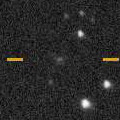
|
Now it is 16.6 mag (May 10, Mount John Observatory, Lake Tekapo). It stays 16 mag for a long time from 2019 to 2020. It is observable in excellent condition in the Southern Hemisphere. It is hardly observable in the Northern Hemisphere.
Date(TT) R.A. (2000) Decl. Delta r Elong. m1 Best Time(A, h)
July 6 10 52.74 -53 28.3 3.544 3.711 91 15.9 18:31 ( 43, 57)
July 13 10 52.91 -53 17.0 3.592 3.688 87 15.9 18:34 ( 46, 53)
|
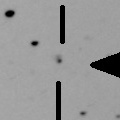
|
Asteroid, but it brightened rapidly. Now it is 16.3 mag (May 24, ATLAS-MLO, Mauna Loa). It is observable in excellent condition in the Southern Hemisphere. In the Northern Hemisphere, it locates extremely low for a while.
Date(TT) R.A. (2000) Decl. Delta r Elong. m1 Best Time(A, h)
July 6 21 48.85 -41 18.7 5.623 6.434 139 16.0 2:56 ( 0, 84)
July 13 21 40.35 -41 51.2 5.565 6.430 145 16.0 2:20 ( 0, 83)
|

|
Now it is 14.2 mag (May 7, Thomas Lehmann). It will be fading after this. In the Southern Hemisphere, it stays observable for a long time until it fades out. In the Northern Hemisphere, it will not be observable after this.
Date(TT) R.A. (2000) Decl. Delta r Elong. m1 Best Time(A, h)
July 6 6 18.16 -24 1.6 5.029 4.410 47 16.0 5:38 (288, 16)
July 13 6 22.26 -24 58.3 5.055 4.461 49 16.1 5:37 (286, 21)
|

|
Now it is 16.3 mag (May 23, Ken-ichi Kadota). It will brighten up to 16 mag from June to August, and it will be observable in excellent condition in the Northern Hemisphere. It is not observable in the Southern Hemisphere.
Date(TT) R.A. (2000) Decl. Delta r Elong. m1 Best Time(A, h)
July 6 16 41.67 85 14.6 1.771 1.735 71 16.1 21:20 (180,-30)
July 13 14 29.05 78 26.2 1.755 1.728 71 16.1 19:02 (180,-23)
|

|
Now it is 16.0 mag (June 27, Steward Observatory, Mt. Lemmon Station). It stays observable in good condition while the comet will be fading slowly after this.
Date(TT) R.A. (2000) Decl. Delta r Elong. m1 Best Time(A, h)
July 6 1 41.83 10 12.2 2.032 2.043 76 16.1 5:38 (203, 42)
July 13 1 56.32 10 34.2 1.979 2.051 79 16.1 5:37 (200, 42)
|

|
Now it is 16.1 mag (June 5, Toshihiko Ikemura, Hirohisa Sato). It will be fading slowly after this. It is observable in good condition in the Northern Hemisphere. In the Southern Hemisphere, it stays extremely low for a while.
Date(TT) R.A. (2000) Decl. Delta r Elong. m1 Best Time(A, h)
July 6 14 40.96 37 51.2 4.728 4.913 94 16.2 19:45 (180, 17)
July 13 14 40.49 36 21.4 4.845 4.965 90 16.3 19:17 (180, 19)
|

|
It has not been observed yet in this apparition. It will be observable at 16 mag in good condition from summer to autumn. It locates somewhat low in the Southern Hemisphere.
Date(TT) R.A. (2000) Decl. Delta r Elong. m1 Best Time(A, h)
July 6 1 57.87 17 56.8 2.129 2.018 69 16.4 5:38 (205, 33)
July 13 2 10.96 19 20.3 2.069 2.023 73 16.3 5:37 (201, 33)
|

|
Now it is 16.6 mag (July 1, D. T. Durig). It stays 15-16 mag for a long time until 2021.
Date(TT) R.A. (2000) Decl. Delta r Elong. m1 Best Time(A, h)
July 6 21 58.11 -35 4.8 4.460 5.271 139 16.5 3:05 (180, 90)
July 13 21 50.23 -35 7.5 4.368 5.242 146 16.4 2:30 ( 0, 90)
|
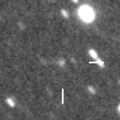
|
Now it is 17.2 mag (May 26, iTelescope Observatory, Siding Spring). It will be fading slowly after this. It is observable in excellent condition in the Southern Hemisphere. It locates low in the Northern Hemisphere.
Date(TT) R.A. (2000) Decl. Delta r Elong. m1 Best Time(A, h)
July 6 15 38.86 -41 20.4 2.890 3.676 134 16.5 20:42 ( 0, 84)
July 13 15 22.95 -40 58.0 2.978 3.667 125 16.5 19:59 ( 0, 84)
|

|
Now it is 16.1 mag (June 5, Toshihiko Ikemura, Hirohisa Sato). It will brighten up to 14 mag in winter. It stays observable for a long time in the Southern Hemisphere. It is observable only until early August in the Northern Hemisphere.
Date(TT) R.A. (2000) Decl. Delta r Elong. m1 Best Time(A, h)
July 6 15 46.15 -32 52.7 2.436 3.252 136 16.6 20:49 (180, 88)
July 13 15 34.37 -33 40.9 2.467 3.194 127 16.5 20:10 (180, 89)
|

|
Now it is 16.7 mag (June 27, Thomas Lehmann). It is expected to be observable at 5-6 mag for a long time from 2022 to 2023. In the Northern Hemisphere, it is not observable at the highlight from 2022 summer to 2023 summer. In the Southern Hemisphere, it stays unobservable for a while. But it will be observable in good condition at the highlight.
Date(TT) R.A. (2000) Decl. Delta r Elong. m1 Best Time(A, h)
July 6 17 29.26 58 12.4 11.166 11.334 96 16.8 22:32 (180, -3)
July 13 17 25.09 57 52.8 11.132 11.288 96 16.8 22:00 (180, -3)
|
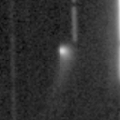
|
Now it is 16.7 mag (May 2, Kunihiro Shima). It will be fading after this. In the Northern Hemisphere, it stays observable in good condition for a long time. In the Southern Hemisphere, it stays extremely low for a long time.
Date(TT) R.A. (2000) Decl. Delta r Elong. m1 Best Time(A, h)
July 6 4 22.54 48 33.3 4.380 3.661 40 16.8 5:38 (214, -8)
July 13 4 23.71 48 37.7 4.339 3.690 44 16.9 5:37 (211, -5)
|

|
Now it is 18.0 mag (June 29, Michael Jager). It will brighten up to 17 mag from June to July, and will be observable in good condition.
Date(TT) R.A. (2000) Decl. Delta r Elong. m1 Best Time(A, h)
July 6 16 55.79 -14 44.3 1.456 2.391 149 17.1 21:57 (180, 69)
July 13 16 30.58 -11 16.6 1.539 2.382 136 17.2 21:05 (180, 66)
|
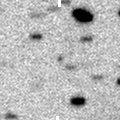
|
Now it is 16.9 mag (May 29, Toshihiko Ikemura, Hirohisa Sato). It brightens up to 17 mag in July. It is observable in good condition in the Southern Hemisphere. It locates low in the Northern Hemisphere.
Date(TT) R.A. (2000) Decl. Delta r Elong. m1 Best Time(A, h)
July 6 11 38.32 0 52.7 0.670 1.023 71 17.2 18:31 (139, 47)
July 13 12 7.08 -7 19.9 0.670 1.058 74 17.2 18:34 (131, 53)
|

|
It has not been observed yet in this apparition. It will brighten up to 15.5 mag and it will be observable in good condition in autumn.
Date(TT) R.A. (2000) Decl. Delta r Elong. m1 Best Time(A, h)
July 6 23 50.51 -5 15.3 2.367 2.845 107 17.3 4:57 (180, 60)
July 13 23 55.22 -5 3.7 2.255 2.814 113 17.2 4:34 (180, 60)
|

|
Now it is 16.4 mag (May 26, Toshihiko Ikemura, Hirohisa Sato). It is observable at 17 mag in good condition in 2019. It locates somewhat low in the Northern Hemisphere.
Date(TT) R.A. (2000) Decl. Delta r Elong. m1 Best Time(A, h)
July 6 15 10.96 -15 33.4 3.250 3.936 126 17.3 20:15 (180, 71)
July 13 15 10.61 -15 42.9 3.345 3.945 119 17.4 19:47 (180, 71)
|

|
Now it is 17.7 mag (June 24, D. T. Durig). It will be observable at 17 mag in good condition from August to September.
Date(TT) R.A. (2000) Decl. Delta r Elong. m1 Best Time(A, h)
July 6 1 35.02 40 54.3 2.432 2.268 68 17.5 5:38 (192, 13)
July 13 1 35.33 39 46.9 2.325 2.277 74 17.4 5:37 (187, 15)
|

|
It has not been observed yet in this apparition. It was expected to be observable at 17.5 mag from June to August. But actually, it was fainter than 21.5 mag in March (Mar. 10, Erwin Schwab).
Date(TT) R.A. (2000) Decl. Delta r Elong. m1 Best Time(A, h)
July 6 18 43.83 -12 41.6 1.107 2.115 169 17.5 23:47 (180, 68)
July 13 18 39.52 -13 53.1 1.106 2.107 166 17.5 23:15 (180, 69)
|

|
Now it is 17.3 mag (May 26, iTelescope Observatory, Siding Spring). In the Southern Hemisphere, it is observable at 17.5 mag in good condition from spring to summer. In the Northern Hemisphere, it is not observable at all.
Date(TT) R.A. (2000) Decl. Delta r Elong. m1 Best Time(A, h)
July 6 16 18.78 -54 48.4 3.601 4.393 136 17.7 21:23 ( 0, 70)
July 13 16 15.70 -54 1.3 3.649 4.394 131 17.7 20:52 ( 0, 71)
|

|
Now it is 17.7 mag (May 14, Catalina Sky Survey). It will be observable at 17.5 mag in excellent condition in the Northern Hemisphere. It locates somewhat low in the Southern Hemisphere. It is faint as 19.0 mag recently (May 29, Toshihiko Ikemura, Hirohisa Sato).
Date(TT) R.A. (2000) Decl. Delta r Elong. m1 Best Time(A, h)
July 6 16 56.98 26 37.2 1.357 2.088 122 17.9 21:57 (180, 29)
July 13 16 21.13 23 15.0 1.451 2.107 116 18.0 20:55 (180, 32)
|

|
Now it is 17.4 mag (May 7, Toshihiko Ikemura, Hirohisa Sato). It will brighten up to 17.5 mag from June to July.
Date(TT) R.A. (2000) Decl. Delta r Elong. m1 Best Time(A, h)
July 6 20 22.80 -31 5.4 1.677 2.653 159 17.9 1:30 (180, 86)
July 13 20 20.34 -32 40.1 1.689 2.681 164 17.9 1:00 (180, 88)
|

|
In the Southern Hemisphere, it is observable at 18 mag in good condition from July to August. It locates low in the Northern Hemisphere.
Date(TT) R.A. (2000) Decl. Delta r Elong. m1 Best Time(A, h)
July 6 20 34.08 -31 45.9 2.682 3.639 156 17.9 1:41 (180, 87)
July 13 20 29.86 -32 15.8 2.653 3.636 162 17.9 1:10 (180, 87)
|
|
![]()
 C/2017 M4 ( ATLAS )
C/2017 M4 ( ATLAS ) 260P/McNaught
260P/McNaught 68P/Klemola
68P/Klemola C/2017 B3 ( LINEAR )
C/2017 B3 ( LINEAR ) C/2019 A9 ( PanSTARRS )
C/2019 A9 ( PanSTARRS ) C/2018 Y1 ( Iwamoto )
C/2018 Y1 ( Iwamoto ) C/2019 D1 ( Flewelling )
C/2019 D1 ( Flewelling ) 123P/West-Hartley
123P/West-Hartley (3200) Phaethon
(3200) Phaethon C/2018 F4 ( PanSTARRS )
C/2018 F4 ( PanSTARRS ) A/2017 U7
A/2017 U7 C/2016 N6 ( PanSTARRS )
C/2016 N6 ( PanSTARRS ) C/2019 J2 ( Palomar )
C/2019 J2 ( Palomar ) C/2019 K5 ( Young )
C/2019 K5 ( Young ) C/2016 R2 ( PanSTARRS )
C/2016 R2 ( PanSTARRS ) 261P/Larson
261P/Larson C/2019 K7 ( Smith )
C/2019 K7 ( Smith ) C/2018 KJ3 ( Lemmon )
C/2018 KJ3 ( Lemmon ) C/2019 K1 ( ATLAS )
C/2019 K1 ( ATLAS ) C/2017 K2 ( PanSTARRS )
C/2017 K2 ( PanSTARRS ) C/2018 A3 ( ATLAS )
C/2018 A3 ( ATLAS ) C/2019 J3 ( ATLAS )
C/2019 J3 ( ATLAS ) 209P/LINEAR
209P/LINEAR 101P/Chernykh
101P/Chernykh 74P/Smirnova-Chernykh
74P/Smirnova-Chernykh C/2019 K4 ( Ye )
C/2019 K4 ( Ye ) P/2012 K3 ( Gibbs )
P/2012 K3 ( Gibbs ) 186P/Garradd
186P/Garradd C/2019 JU6 ( ATLAS )
C/2019 JU6 ( ATLAS ) C/2019 J1 ( Lemmon )
C/2019 J1 ( Lemmon ) 215P/NEAT
215P/NEAT![]()

























